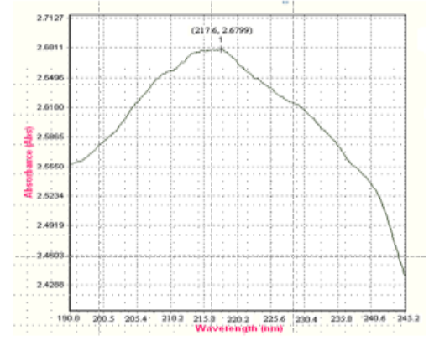


Indian Journal of Science and Technology
DOI: 10.17485/IJST/v16i47.1760
Year: 2023, Volume: 16, Issue: 47, Pages: 4481-4489
Original Article
Sheeja Leela1*, M Gouthami2, K R Jayapriyan3, R Shenbhagaraman4
1Assistant Professor, Department of Plant Biology and Plant Biotechnology, Shrimathi Devkunvar Nanalal Bhatt Vaishnav College for Women, Chromepet, Chennai, 600044, Tamil Nadu, India
2M.Phil. Student, Department of Plant Biology and Plant Biotechnology, Shrimathi Devkunvar Nanalal Bhatt Vaishnav College for Women, Chromepet, Chennai, 600044, TamilNadu, India
3Assistant Professor, Centre for Advanced Studies in Botany, University of Madras, Guindy Campus, Chennai, 600 025, Tamil Nadu, India
4Associate Professor, Bharath Institute of Higher Education and Research, Selaiyur, Chennai, 600073, Tamil Nadu, India
*Corresponding Author
Email: [email protected]
Received Date:13 July 2023, Accepted Date:10 November 2023, Published Date:20 December 2023
Objectives: Screening, production, and characterization of exopolysaccharides (EPSs) from Bacillus sp., an associative bacteria isolated from marine seaweed Sargassum. To synthesize and characterize silver nanocomposites using EPS isolated from Bacillus sp. and to evaluate their application in dye degradation. Methods: Seaweed-associated bacteria were isolated from Sargassum wightii by serial dilution and pour plate method. The colonies capable of producing exopolysaccharides on YMG agar plates were purified and identified up to the Genus level by Bergy’s Manual of Determinative Bacteriology. The EPS-mediated silver nanoparticles (EPS-AgNPs) obtained from partially purified EPS were characterized by chemical analysis, UV-visible spectroscopy, FT-IR, SEM, and Powder XRD and evaluated for photocatalytic dye degradation. Findings : A seaweed-associated bacterium, Bacillus sp. was isolated from Sargassum wightii, and the extracted EPS was confirmed by the presence of amide, hydroxyl, and carboxyl groups in FTIR. Further, Exopolysaccharide- silver nano-composite was prepared. The characterization studies show a specific absorbance peak at 217 nm in the UV-Vis spectrum and the presence of hydroxyl and carboxyl groups in FT-IR spectroscopy. This confirms that EPS is responsible for the reduction of silver-to-silver nanoparticles. The SEM analysis reveals the formation of AgNPs with sizes ranging from 80-100 nm in a spherical shape. Under sunlight irradiation, the photocatalytic dye degradation of organic dyes like Congo red and methylene blue was studied with the synthesized exopolysaccharide-mediated silver nanoparticle (EPS-AgNPs). The percentage of degradation efficiency was calculated as 97% for Congo red and 95.6% for Methylene blue after 48 hours of exposure time. Novelty : The novel idea of the study was the utilization of potential associative bacterial isolate from seaweed Sargassum wightii which is capable of producing an EPS for the synthesis of silver nanocomposite. A significant achievement of this study is that the EPS component from the new bacterial isolate was suitable for the synthesis of silver nanocomposite which helps in the gradual photocatalytic degradation of textile dyes by providing a longer half-life and better degradation efficiency.
Keywords: EPS, SEM, AgNPs, FTIR, Sargassum
© 2023 Leela et al. This is an open-access article distributed under the terms of the Creative Commons Attribution License, which permits unrestricted use, distribution, and reproduction in any medium, provided the original author and source are credited. Published By Indian Society for Education and Environment (iSee)
Subscribe now for latest articles and news.